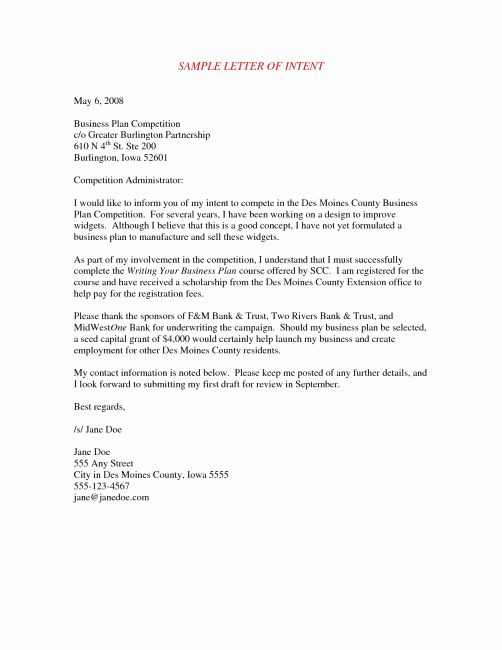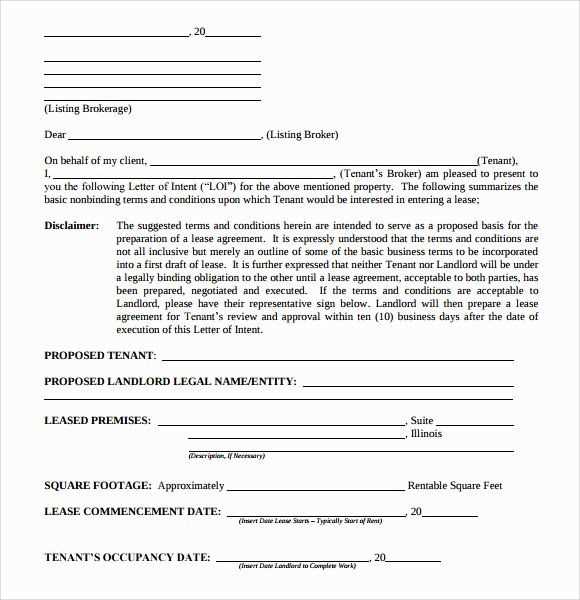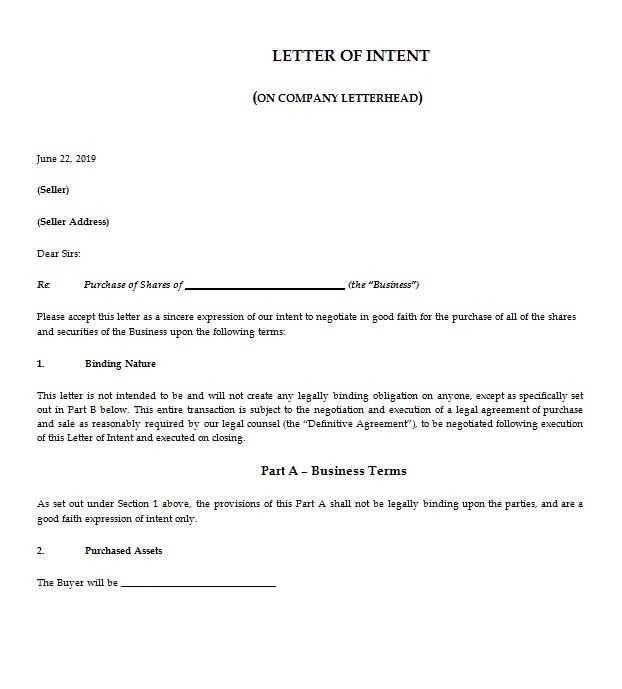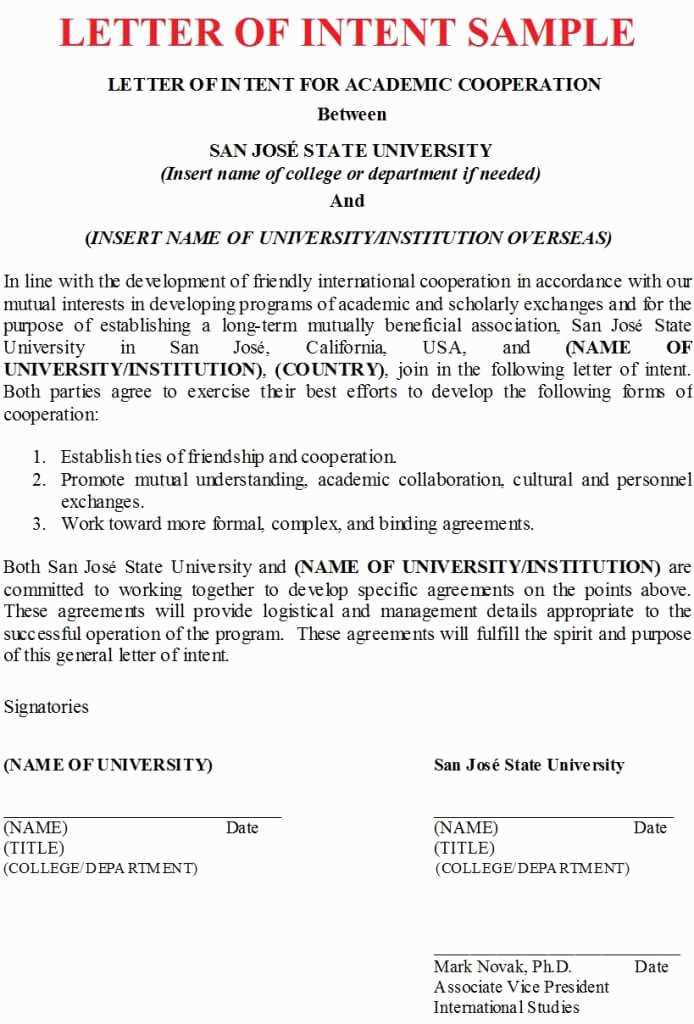Letter of Intent for Business Cooperation Template

When two or more parties are looking to explore potential collaboration, a formal written agreement can outline mutual intentions and provide clarity on the goals. This type of document serves as a preliminary step before formal contracts are created, ensuring that both sides are aligned in their objectives and expectations.
Essential Components of an Agreement
A well-structured document should cover several key points to ensure that both parties understand their roles, responsibilities, and expectations. Some critical elements include:
- Parties Involved: Clearly define who the individuals or organizations are.
- Purpose of Agreement: Specify the primary goal or reason for the proposed partnership.
- Responsibilities: Outline what each party is expected to contribute.
- Timeline: Include any relevant deadlines or milestones.
- Confidentiality: Mention any confidentiality requirements or non-disclosure clauses.
Structure and Formatting

The structure of this type of document should be straightforward and easy to follow. Begin with a heading that introduces the nature of the agreement, followed by sections that clearly define each element. Each section should be brief but comprehensive, providing enough information for both parties to understand the terms without ambiguity.
When to Use This Document
This document can be useful in various scenarios, such as entering into joint ventures, establishing partnerships, or initiating any form of collaboration where formal commitments need to be expressed early in the relationship. It is not legally binding but sets the stage for further negotiations and formal agreements.
Advantages of a Well-Defined Agreement

A clearly written document can prevent misunderstandings and set the foundation for a successful working relationship. By addressing all crucial points upfront, both parties can ensure that their expectations are aligned and that they have a roadmap for future discussions. This also demonstrates professionalism and commitment to the project or partnership.
What is a Formal Agreement Document
Key Components to Include in Your Document
How to Structure a Professional Correspondence
Frequent Errors to Avoid
When to Use a Preliminary Agreement
Advantages of a Clear and Concise Document

This document serves as a preliminary expression of mutual intentions between two or more parties, outlining the goals and expectations before a more formal agreement is created. It helps establish a common understanding and serves as the foundation for future negotiations.
Key Components to Include in Your Document: A properly structured agreement should cover several critical elements. These include:
- Parties Involved: Clearly define who the individuals or organizations are.
- Purpose: Describe the primary objective of the agreement.
- Roles and Responsibilities: Specify what each party is expected to contribute.
- Timeline: Establish deadlines or key milestones.
- Confidentiality: Include terms related to confidentiality or non-disclosure where necessary.
How to Structure a Professional Correspondence: The document should have a clear and logical structure. Start with an introductory section that outlines the purpose, followed by a detailed breakdown of the agreement’s key points. Conclude with a summary of expectations and next steps. Each section should be concise yet detailed enough to leave no room for ambiguity.
Frequent Errors to Avoid: Common mistakes when drafting such documents include being overly vague, omitting critical details, or using complicated language that may confuse the recipient. It’s essential to keep the language clear and ensure all necessary information is included to avoid future misunderstandings.
When to Use a Preliminary Agreement: This type of document is typically used when two parties wish to explore a potential collaboration or partnership but are not yet ready to enter into a binding contract. It sets the tone for further discussions and helps both sides determine if they are aligned in their goals and expectations.
Advantages of a Clear and Concise Document: A well-written and straightforward agreement provides clarity, reduces the chance of misunderstandings, and creates a solid foundation for future interactions. It shows professionalism and commitment, fostering trust and transparency between the parties involved.